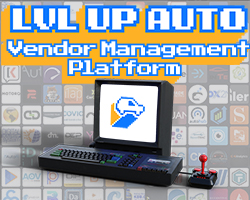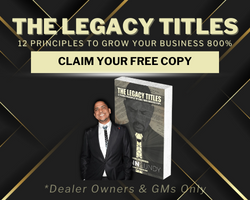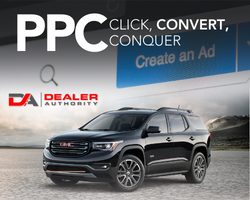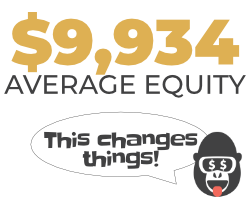In the world of business jargon, the term bottleneck is used to describe a point where one area or process reduces capacity of the whole chain or flow of processes.
In the world of drinking, the term bottleneck is the place where the flow of beer is slowed, forcing you to drink slower. In the case of the latter, one can simply pour their beverage into a glass. In the case of the former…well you may need to drink to make it feel better.
From the Bureau of the Obvious Facts, automakers spend bazillions on branding. According to Forbes data in 2014 GM allocated Chevrolet $5.5B, while Ford followed at $4.4B. Toyota and Honda were at $4.2B and $2.9B, respectively.
This kind of money is spent every year to tell rich and intriguing stories about why consumers should buy these brands, crafted by sophisticated people, in swank offices in Manhattan. The fulfillment of these carefully developed brand promises rest directly on the men and women who are selling vehicles, most of whom are doing so just to make a buck. Inspiring, right?
Take for instance, Cadillac. Here’s a brand that seems to be checking the right boxes:
Awesome design: CHECK!
Authentic brand heritage: CHECK!
Can beat your neighbor’s BMW in a road race: CHECK-CHECK!
Sold at Chevy dealers: ah, #$%&!!!
Don’t get me wrong. There isn’t anything fundamentally wrong with Chevrolet dealers. They’re good at selling Chevys, and most do a bang-up job selling other brands, too. The problem is that BMW, Mercedes, and Lexus buyers (who comprise HALF of the luxury market, and keep pushing downmarket) aren’t so keen on commingling with the natives.
Who (besides GM) can blame the Chevy dealers for catering to Chevy buyers? After all, they sold 2 Cadillacs for every 25 Chevrolets last year.
For the past several years, we’ve often advocated to our dealer clients that they should be putting their personnel ahead of the dealership and OEM brand. I’m going to stick to those guns.
Ipsos conducted a comprehensive study (over 10k people, 99 different psychographics) in which they asked responders what is “extremely/very important considering different auto dealerships that you might visit?”
The results were rather startling.
Low-pressure and knowledgeable salespeople trumped the top of the list, while no-haggle policies, previous experience with store, and free loaners rounded out the bottom. That new coffee bar in the customer lounge only matters to one person: the person who put it there.
A few weeks ago I was asked to share my thoughts regarding the changes that will take place in 2015. One of my predictions is that ‘OEMs will also push flatter dealership hierarchy, with more product experts and fewer actual sales personnel.’ Actually, this is already happening to a certain degree. BMW and GM have already tested the “Genius Bar” strategy (with varying degrees of success) as a means to bring the interests of the manufacturer and the consumer in line. Not to rabble-rouse, but I believe these to be merely jabs in a fight to knock-out commissioned dealer personnel.
Let me state, I loved being a commissioned salesperson. Nothing quite beats the rush of selling a (rare) car for more than sticker, or upfitting a truck for snowplow duty. The problem is that it didn’t benefit the manufacturer when I did that. Nor did it benefit the manufacturer when I brokered deals with other dealers so that I could sell other brands of vehicles. The customer and I won, but the manufacturer still lost. That created a bottleneck for the OEM because of my own personal motivations.
Consumer sentiment has changed tremendously in just the few short years I’ve been out of retail. Brand loyalty seems to be questionable at best, with an automotive market more fractured than ever (the standard deviation in market share between all manufacturers, from GM to Rolls Royce, is only 5.6%).
Countless surveys have indicated that customers’ tolerance for poor customer service is plummeting. Just look at the omnipresent online reviews. With today’s concierge culture, it’s a real possibility that the activities (or lack there of) from one individual at the dealership cannot only eliminate that dealership from consideration, but alienate the entire brand from contention. Nobody wants that.
As a corollary, it’s high-time that multi-brand, multi-rooftop groups work in concert with one another. If you’ve sold a car, you’ve heard a million car-buying horror stories from everybody and their brother. One that I’m hearing with increasing frequency is that, despite the same name on the building, Dealership A has zero interest in helping Dealer B sell a different brand of vehicle.
As we grade lead follow-up with our TaskTeacher tool, it’s with hilarious regularity that we see customers cross-shopping different brands within the same dealer group. Better yet, we see customers shopping same brand stores across dealer groups. This is a massive bottleneck for the dealer group’s brand. Not only does this damage brand equity, but it causes grief among employees, and alienates customers from future business. It also costs the dealership group money that doesn’t need purging. Please wake up!
As the crossfitters post on Facebook with near religious fanaticism, it’s time for dealers to embrace the suck. OEM’s will begin to apply every ounce of leverage they have to bring customer experience to a level that is congruent with favorable focus group results (and the said squajillions in advertising dollars).
The dealers who will excel in this brave new world are the ones who will invest heavily in hiring and RETAINING the best talent available (sorry vendors). The most valuable talent will have encyclopedic knowledge about their products, and will act as a conduit between the brand ideals and customer expectations. They will probably bear little resemblance to today’s sales, service, and call center staff. Retention will be the only goal that matters. The brand bottleneck will disappear, and with it a massive influx of cashflow. The earliest dealer adopters will be the most wildly successful in this new retail environment.
It’s not too late to make a New Years resolution. If you haven’t already, it’s time to master the brand your dealership sells. If you sell multiple brands, it’s time to become a chameleon, being able to blend-in with any OEM brand image.
If you run a multi-rooftop operation, it’s time to consolidate behind your brand while effectively representing your OEMs. Your customers are not getting any dumber, the lines that separate vehicles aren’t getting clearer, and access to information isn’t getting harder. Stop being the bottleneck, and pour yourself a frosty glass of success.
Questions:
What kind of training is happening at your dealership to help your sales staff master the brand(s) your dealership sells?
How is your dealership RETAINING its best talent?
How do you feel about being more of a Product Expert rather a Commissioned Sales Representative?









